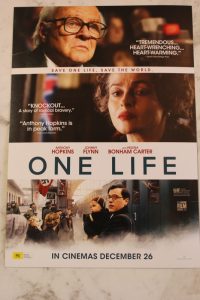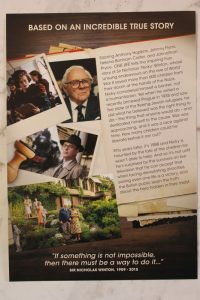Monet in Paris


Image Pixabay
We went to see ‘Monet In Paris’. Claude Monet (born 14th November 1840, Paris, died 15th December, 1926, Giverny) belonged to a group of artists known as Impressionists. This electronic immersive experience with both images of paintings and photos projected onto 7 metre high screens highlights the most famous works of Monet and other artists working during the same period. This list includes Pierre-Auguste Renoir, Paul Cézanne, Camille Pissarro, Edouard Manet, Edgar Degas and Henri Toulouse Lautrec. These artists tried to capture 19th century Bohemian Paris and the lush French country side, highlighting the social and political environment of the time. When they exhibited their works, a journalist said they were more like ‘impressions’ rather than traditionally detailed paintings. The name stuck.


The images at Monet in Paris were shown on huge screens allowing the viewer to hone in on the details of the paintings. These are not overly detailed works of art, they are ‘impressions’. The subjects are not posed in the traditional manner, but show people going about their every day lives. Accompanied by classical music and some intriguing moving visuals I found this show captivating. It was also very entertaining watching a small child nearby try and catch a fish and a dragonfly, both images projected onto the carpet.


Image Pixabay
The invention of tubes for paint opened up the outdoors to artists. John Goffe Rand invented a type of syringe or tube in the 1840s which evolved into tubes for paint as we know them now around the 1900s. This meant artists could paint en plein air, to capture immediate and everyday images away from their studios.


Image Pixabay
Many of Monet’s well known artworks feature his garden. He claimed to be good at two things, painting and gardening. His famous garden, Giverny, continues to attract thousands of visitors every year. He developed strict rules about mixing colours, shapes and surfaces, analyzed over time by many garden designers and historians. He admired reflections and movement on water so much he employed a gardener whose sole responsibility was to keep the pond clean and to ensure the water lilies were separated by variety. Many of his most famous later paintings feature aspects of his amazing garden.
‘one life’
It’s blisteringly hot in Perth at the moment so we went to the cinema. We saw ‘One Life’ starring Anthony Hopkins, Johnny Flynn and Helena Bonham Carter. This is the story of (Sir) Nicholas Winton. Nicky, as he was known, was a young stockbroker living in London with his Mother. He set off for Prague in 1938 to visit a friend for a week. The Czech Sudetenland had been annexed by the Nazis and they were expected to invade the rest of Czechoslovakia imminently. He was confronted by the masses of Jewish families fleeing the Nazis.
Nicky Winton did what he thought was right. Overcoming enormous obstacles he organised visas, trains, sponsor families and the money necessary to temporarily home 669 Jewish children in the United Kingdom.


Nicky Winton was haunted by the ninth train he arranged being intercepted by the Nazis on the station in Prague. Fifty years later he is invited to a television program where it is revealed that everyone in the audience was a child who had survived and grown up in the UK, due to his efforts. Most had stayed in the UK as their families were murdered during the holocaust. This was a very moving film.


‘One Life’ is a beautifully told, one of many about repatriating fleeing Jewish families ahead of the Nazis arriving. All tell of immense bravery and determination to do the right thing.
‘If something is not impossible, then there must be a way to do it…’
Sir Nicholas Winton, 1909 -2015
minimizing fabrics going to landfill
Fashion is an enormous contributor to landfill or to the pollution caused by burning, especially clothing made of manmade fibres which do not break down quickly. Another source of fabrics to landfill has been decorative fabrics. These are often made of cotton, wool, silk or linen although cheaper curtaining and furniture covers are often synthetic or blends as are cheaper carpets.


Image Pixabay
An interesting shift is occurring in the UK with the end of season, display samples or end of roll fabrics from decorative suppliers. Some fabric houses are extending access to their textiles by offering warehouse sales with considerable discounts offered, direct from their websites or instore sales. To view warehouse sales the shopper needs to register. Fabrics offered can be as little as 2m and up to 40m.
The smaller pieces are ideal for cushion covers, slightly larger lengths are good for stools, table linen, blinds and headboards, four or five metres will upholster a chair and the larger pieces will make generous curtains. Hope to see this become common practise, adopted everywhere.
